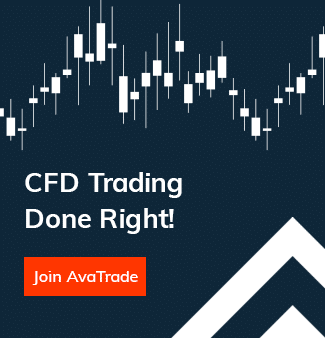Siemens Stock
| Instrument:SIEMENS |
Trade SIEMENS Stock
‘Ingenuity for life’ is the Siemens company motto, and for over 170 years, the company has been a global technology pioneer in the areas of electrification, automation and digitization. As one of the largest European industrial manufacturing companies, Siemens AG began its story on October 12th, 1847, when it was founded by Werner von Siemens and Johann Georg Halske in Berlin, which was then part of the Kingdom of Prussia. The company is headquartered in Berlin and also in Munich, Germany.
Siemens Stock Trading Information
- MT4 Symbol: _SIEMENS
- Trading Times: Monday – Friday 08:00 – 16:29 London Time GMT
- Country: GERMANY
- Currency: EUR
- Exchange: Frankfurt Stock Exchange
- Minimum Trade Size: 10
- Leverage: up to
Open your trading account at Friedberg Direct or try our risk-free demo account!
Siemens started out by building long distance telegraph lines, and a sales crisis early on in its history led the company on its path of ‘internationalization’. Initially a survival tactic, Siemens incorporated innovation as part of its core philosophy, and in its quest for global domination, the company has not only managed to change itself but has also shaped the technological path of our world.
Siemens first entered the capital markets on June 3rd, 1897, when it was converted into a stock corporation. It was then known as Siemens & Halske and was only reincorporated as Siemens AG in 1966 after performing a major restructuring that saw all its subsidiaries brought under one roof. Siemens continues to trade on the Frankfurt Stock Exchange under the ticker symbol SIEGY. Siemens also made its first listing on the New York Stock Exchange in 2001, but later delisted in 2014 to simplify its financial reporting and improve efficiency.
Owing to its various localised operations in different countries, Siemens has also been listed on multiple stock exchanges that include: London, Vienna, Zurich, Geneva, Amsterdam, Paris, Basel and Brussels. Siemens is a global powerhouse operating in the following key reportable segments: Power and Gas, Energy Management, Building Technologies, Mobility, Digital Factory, Process Industries and Drives, Health Engineering and Financial Services.
The aptly named Healthineers division is a leading worldwide provider of medical technology and accompanying services, and has been the best performing segment of Siemens, bringing in consistent revenues of about 20%. This medical technology company is headquartered in Erlangen, Germany. A major reason Siemens has been able to survive over the years has been its strategic policy of always maintaining an active portfolio. It means that the company has always been active in acquisitions and divestments. Its major buys have included Mentor Graphics Corporation, Rolls Royce Energy Division, Invensys Rail, Power Machines and Bayer Diagnostics. Siemens has also never shied away from making divestitures to improve its bottom line stability and efficiency. Its major divestments include OSRAM, Areva, Siemens Telephone Unit, Dematic and Wireless Modules.
Siemens Stock History
Since going public, and as of January 2019, Siemens has only had one stock split: a 3-for-2 implemented on May 7th, 2001. This was done in a period when the company’s stock was declining in value, and the subsequent lower share price was designed to attract investment to cushion Siemens against aggressive rivals as well as support its ambitious expansion plans. Siemens has always been a high-value stock despite cycles of boom and bust. The worst period in its history has to be the early 1990s when the company pursued an aggressive acquisition strategy that meant a higher than normal debt accumulation. It is during this time that the stock posted its lowest price ever of circa €18 per share.
It recovered nicely, and by the late 1990s, the stock posted a rally that topped out at around €130 per share. A subsequent tumble followed in late 2000, but after the share split, the stock became a solid performer, even defying the 2005 bribery scandal, and only turning bearish during the 2007/8 global financial crisis. After posting a low of circa €36 per share in October 2008, Siemens stock trended solidly higher and even touched an all-time high of circa €133 per share in May 2017. Siemens has a healthy balance sheet and has been a regular and generous dividend payer. Since the turn of the millennium, Siemens has paid out incremental annual dividends from €1.00 a share in 2000, to a high of €3.70 in 2018.
As of January 2019, the lowest dividend yield has been 0.44%, while the highest has been 5.35%. Based on this, the average dividend payout is 3.28%. As a consistent dividend payer and high-value stock, Siemens will continue to be on the watch list of many investors who prefer a steady portfolio.
How to Trade Siemens Stock
Siemens is one of the most followed stocks in the world. Still, its diversified global operations mean that it has interesting dynamics every investor should consider when trading it.
Here are some of them:
- Tariffs and Trade Agreements
Siemens has a local presence in more than 190 countries as well as 290 production sites and factories located in over 40 countries. This leaves the company vulnerable to changes in tariffs and trade agreements between various jurisdictions. For instance, in the wake of the US-China trade tensions in early 2018, the Healthineers division announced plans to shift its supply routes to ship from its European production sites to cushion against any arising risks.
- Legislative and Taxation policy
As a company with a massive global footprint, Siemens faces varied legislative and taxation challenges, which might impact its bottom line. It is important to track any changes in the above areas and in the major jurisdictions that the company operates in.
- Lawsuits and Negative PR
One of the primary customer groups of Siemens are national governments. In dealing with particular governments in the developing world, Siemens has been found to engage in what was deemed to be unethical behaviour to win massive contracts. This culture dates back to 1914 when it was accused of bribing officials to win a shipbuilding contract. But it is a global bribery scandal that the company faced in 2005 and resulted in payouts of close to €3.2 billion, that has shown how a lawsuit can damage a company’s image. Investors usually punish companies with negative public image, and it is important to watch out for this issue with regards to Siemens.
- New Product Rollout
Siemens operates in a dynamic technology space where innovation is vital for survival. In 2017, the company invested €6.6 billion in research and development, and it also holds over 63,000 patents around the world. But this high cost is only justifiable if a new product rollout becomes successful. A new product that fails to become a hit causes a significant capital dent on the company, especially because Siemens deals with higher priced products.
- Periodic Earnings Reports
Siemens’ fiscal year runs from October to September, and the company releases quarterly earnings reports to keep shareholders updated on its business health.
It is important to assess the performance of its various reportable divisions as well as its growth (or lack thereof) in the major regions it operates in. New government contracts should also be tracked as they can impact heavily on the company’s bottom line.
Disclaimer: This is a general analysis and not to be viewed or construed as actual trading advice or a recommendation of any kind and just an example of how a particular instrument could, potentially, be traded.
Why Trade Siemens Stock with Friedberg Direct
- Regulation – Friedberg Direct, a division of the Friedberg Mercantile Group Ltd, is a member of the Investment Industry Regulatory Organization of Canada (IIROC) and a member of the Canadian Investor Protection Fund (CIPF).
- Profit from Falling Markets – Traders can long or short Siemens stock according to market moves. This is the major advantage of trading CFDs with Friedberg Direct. You can short sell the stock with ease when it is trending lower and profit from falling markets.
- Leveraged Trading – Friedberg Direct offers leverage of up to on CFDs, which gives investors the unique chance of potentially maximising their profits, even with a low capital outlay.
- Direct Access to Global Equity Markets – Alongside Siemens stock, there are numerous stock CFDs available from all the major world exchanges. This provides investors with direct and instant access to the global equity markets.
- A Platform That Fits All Levels – The trading platform suits both short- and long-term trading styles as well as beginner and professional traders.
Open an account today and trade the biggest stocks in the world!
Disclaimer: Please note these are stock CFDs (Contracts for Difference)
When you enter into a CFD trade you don’t buy the actual stock itself but instead agree on a contract with the broker to settle the difference in value between the entry and exit price of the Stock based on the price the stock is trading at on the Exchange it is listed. That means when you trade Stocks CFDs with Friedberg Direct you get a flexibility that stock market rules often make very difficult or even impossible for some.







